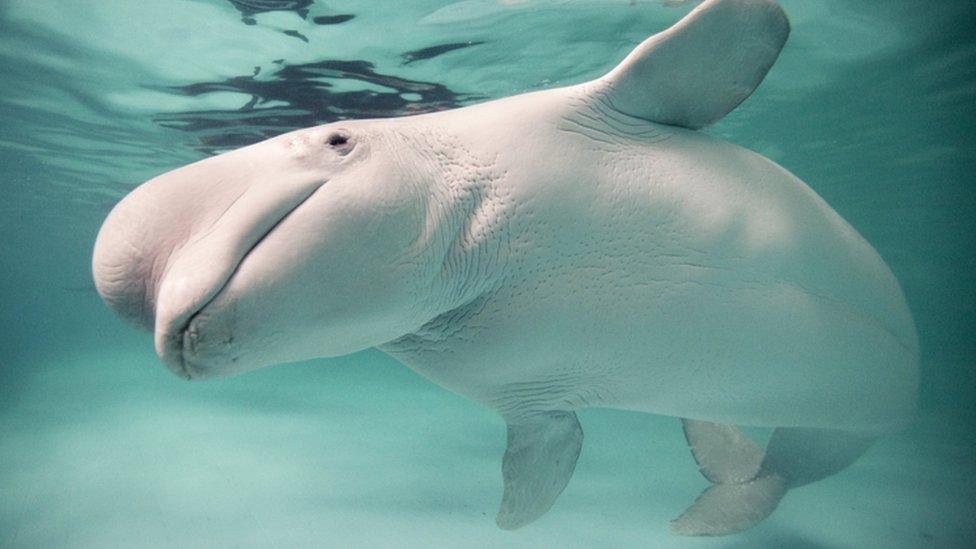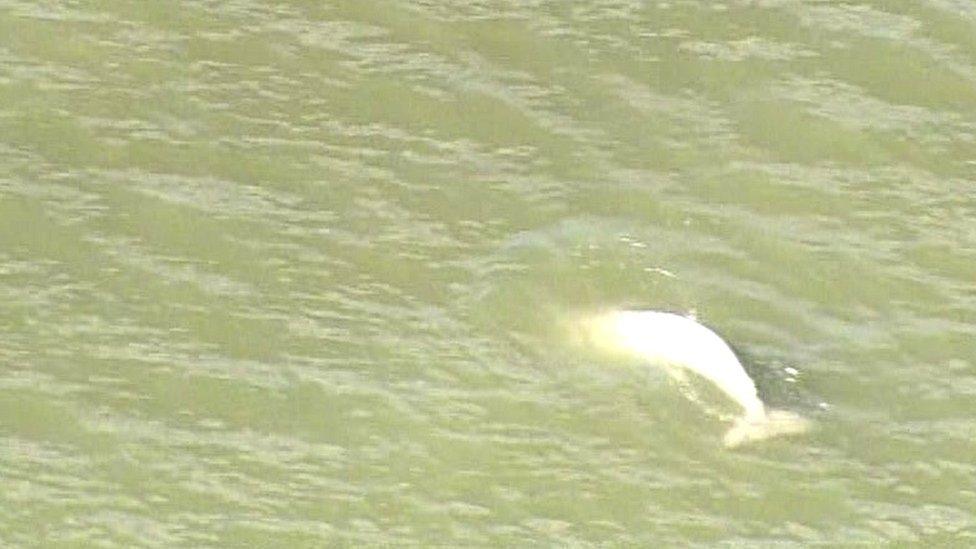Thames whale: Benny the beluga still 'foraging normally'
- Published
Benny the beluga was first spotted in the Thames in September
A beluga whale which has been in River Thames for more than a week is still in the area swimming and eating normally, according to conservationists.
The 12ft (3.5m) whale, nicknamed Benny, was first spotted in the Thames estuary near Gravesend, Kent, on 25 September.
The British Divers Marine Life Rescue (BDMLR) said it continued to be "highly mobile".
The charity said experts plan to place hydrophone equipment in the water to record the whale's sounds.
"The beluga whale continues to be highly mobile, providing limited sightings and swimming strongly and from what we can tell, it is exhibiting normal foraging," a spokesman said.

The estuary where the whale is feeding is a busy shipping channel
The BDMLR said the hydrophone equipment would allow experts to analyse Benny's behaviour
"This may confirm it is feeding," the spokesman added.
Experts said the whale appeared to be a sub adult - an older juvenile but not a fullyformed adult.

Benny the beluga is still "swimming strongly" more than a week after being first spotted
The BDMLR and the Port of London Authority continue to urge river users, including shipping companies, to steer clear of the beluga whale, which is thousands of miles away from its Arctic habitat.
Beluga whales can grow up to 20ft in length and are usually at home in the icy waters around Greenland, Svalbard or the Barents Sea.
The species was last spotted in the UK three years ago off the coast of Northumberland and Northern Ireland, but sightings were "extremely rare", the BDMLR said.
In 2006, an 18ft (5m) northern bottle-nosed whale died after becoming stranded in the Thames, external.

What is a beluga whale?

Belugas, also known as white whales, are "one of the most familiar and easily distinguishable" of all whales, according to National Geographic.
They range from 13ft (3.9m) to 20ft (6.1m) in length and have distinctive rounded foreheads. A beluga can change the shape of its "melon" by blowing air around its sinuses, external, according to the WWF.
Belugas are commonly found in coastal waters of the Arctic Ocean around Alaska, Russia, Canada, and Greenland. but are also at home in large rivers. They can move between salt and fresh water.
The beluga can swim backwards and can move their heads up, down and side-to-side, unlike other whales. They do not have a dorsal fin to help preserve body heat.
Calves are born dark grey and it can take up to eight years before they turn completely white.
Beluga calls variously resemble a cork being prized from a bottle or a creaking door, along with sounds described as clicks, squeaks, chirps, bleats, moans, groans, and whistles, giving them the nickname of "sea canaries".
- Published29 September 2018

- Published27 September 2018

- Published26 September 2018

- Published25 September 2018

- Published25 September 2018
